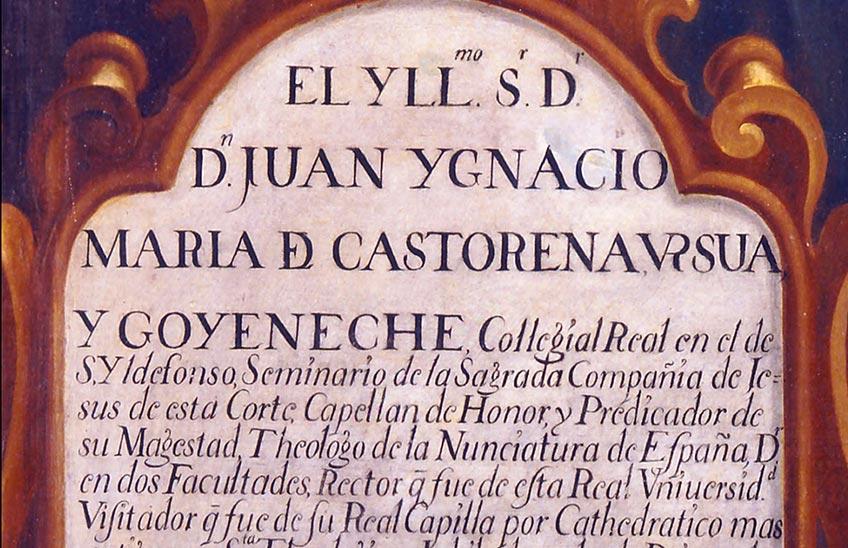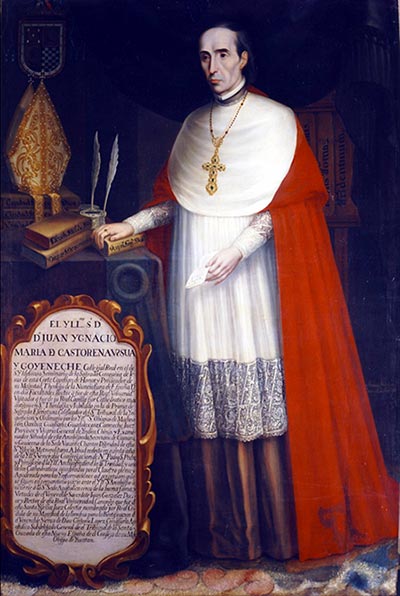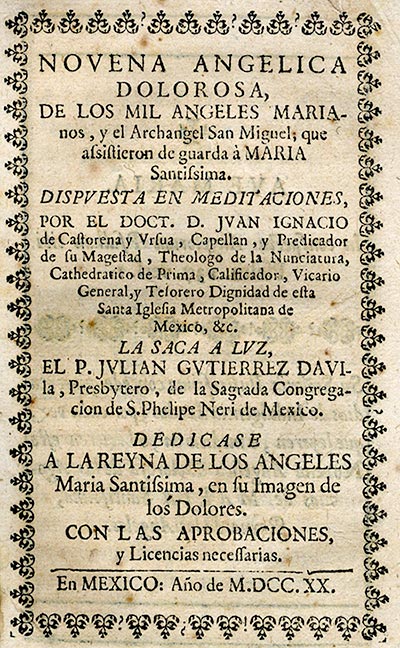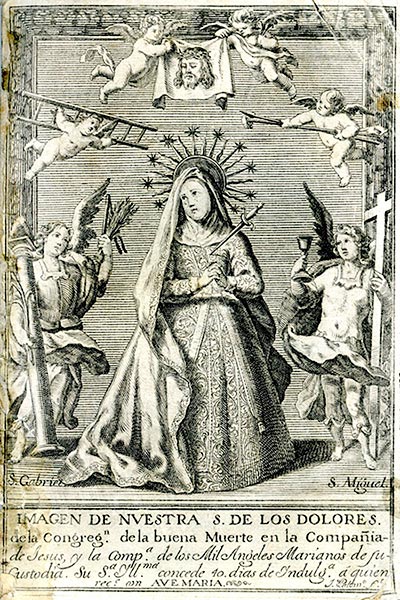A belated example of evisceration: Bishop Castorena y Ursúa

FotoCedida/Detailof the registration of the portrait of Bishop Castorena, in the Museo Nacional del Virreinato, Mexico, by Nicolás Rodríguez Juárez.
During the Middle Ages, average, it was widely believed that the bodies of those buried inside churches benefited more from the liturgical services celebrated in them and, therefore, attained divine forgiveness sooner. This is why the tombs closest to the altar were more valuable than those further away. Prominent figures left orders in their wills for their entrails to be sent to the shrines of their devotion, such as sample the heart of Charles II in Ujué. As is well known, the monarch, following the tradition of the Capetos, ordered that his body be eviscerated and his entrails deposited in different shrines. His heart arrived at the shrine in January 1387. In 1404, Charles III had an oak box made to preserve the viscera.
The sub-prior of Roncesvalles noted, at the beginning of the 17th century: "I note here an antiquity: that the kings of France and Navarre and many other princes kept a custom and that was that, when they had just died, they embalmed the bodies, especially when they had to be taken far away for burial, and they divided up the heart and entrails, taking them to the churches where the deceased was most devoted..., where masses and other suffrages were celebrated for the souls on the day they were transferred or deposited'. It includes, among other examples, what happened to Queen Joanna, wife of Charles II, who died in 1374, buried in Saint Denis, whose heart went to the Pamplona church and her entrails to Roncesvalles.

Portrait of Bishop Castorena in the National Museum of the Viceroyalty of Mexico, by Nicolás Rodríguez Juárez. source.
The case of Bishop Castorena y Ursúa, at plenary session of the Executive Council 18th century
Don Ignacio de Castorena y Ursúa (1677-1733) was the son of Captain Don Juan Castorena Ursúa y Goyeneche, a captain and merchant from Baztán, born in Zacatecas, was ordained a priest and obtained a doctorate in canons at the University of Mexico, where he also taught and was President. He travelled to Spain to study theology in Avila. On his return, he became a qualifier for the Inquisition, synodal examiner, provisor and vicar of the archbishopric of Mexico and bishop of Yucatan from 1729. In addition to his many charitable works, he was also a writer and in 1720 he published the first New Spanish newspaper, the Gazeta de México, which appeared once a month and contained religious, commercial and maritime news, as well as a regular section of book reviews. Among his works are titles on Saint Ignatius of Loyola and Saint Philip Neri, but, above all, the book Fama y Obras Póstumas de sor Juana Inés de la Cruz, printed in Madrid in 1700, stands out. Thanks to this publication, the work that Sister Juana had unpublished when she was condemned to destroy her writings is now known.
From 1718 several bequests of his are documented in favour of the convent of Conceptionists of Ágreda, founded by the famous Sister María Jesús de Ágreda, for whom Castorena felt admiration and devotion. Among the gifts there are cash amounts, money to make a lectern and chocolate for the nuns, a "Child Jesus in a bed of hammered silver, with the gilded tops", a canvas of the Virgin of Guadalupe, as well as 2.000 pesos for a foundation of masses and endowment of its chaplain. In a letter, dated April 1721 in Mexico, he refers to Sister Mary as "prodigious and singular doctor", and at the same time asks for relics and promises a large sum of money for her beatification. In the same letter he adds: "I have requested with all my might the extension of her doctrines and the cult of her author among the faithful of these kingdoms, in the Chairs and pulpits, and to her gift I have dedicated a high school of honest maidens that was erected for my devotion".

Novena to the Sorrowful Virgin of the Thousand Angels with meditations arranged by Bishop Castorena, Mexico, 1720.
In 1731 he drew up a will, ordering another foundation in the convent of Ágreda, consisting of an anniversary with a sung mass, vigil and response and another twenty-five masses for his soul. However, the most surprising of this document is the clause, in which he disposed: "Iten I order that my last and deliberate will, that opened my body, the heart, language and superior brain or the brains, for being the offices and organization in which the soul united to the body exercises its thoughts, words and works, is put with separation in a little lead box, inside another one of wood, and it is sent to the convent of religious of the Purísima Concepción of the town of Ágreda so that.... so that through her intercession and that of her nuns, my faults and the penalties due for them, which I have committed by thoughts, words and deeds, may be forgiven, and when it is to be remitted, four hundred pesos to be taken out and segregated from my goods, shall also be remitted".
It is striking that a man of the 18th century, with an intense cultural and intellectual life, returned for reasons of a mystical nature to order those eviscerations. Undoubtedly, in his personality there was quotation something that, nowadays, we would see as a cross and a tail, but which this man of the Age of Enlightenment felt as a unity ex toto corde. In this respect, we can remember that another illustrious man from Baztan, Don Juan de Goyeneche, entrusted in his will (1730) the manuscript of the first volume of the Mystic City of God of Mother Agreda as the piece that had to be taken care of the most. Perhaps this is the last thing that a 21st century man could expect in the testamentary dispositions of the famous novator and protagonist of the excellent monograph by Professor Blasco Esquivias entitled Nuevo Baztán. La utopía colbertista de Juan de Goyeneche (Madrid, Chair, 2019).

Engraving of the Dolorosa and the Thousand Angels of the Congregation of the Good Death
To find out more
FERNÁNDEZ GRACIA, R.: Art, Devotion and Politics. La promoción de las artes en torno a sor María de Ágreda Soria, 2002 and Iconografía de sor María de Ágreda, Imágenes para la mística y la escritora en el contexto del maravillosismo del Barroco, Pamplona, committee organizador del IV Centenario de sor María Jesús de Ágreda, 2003.
